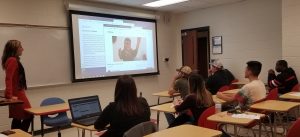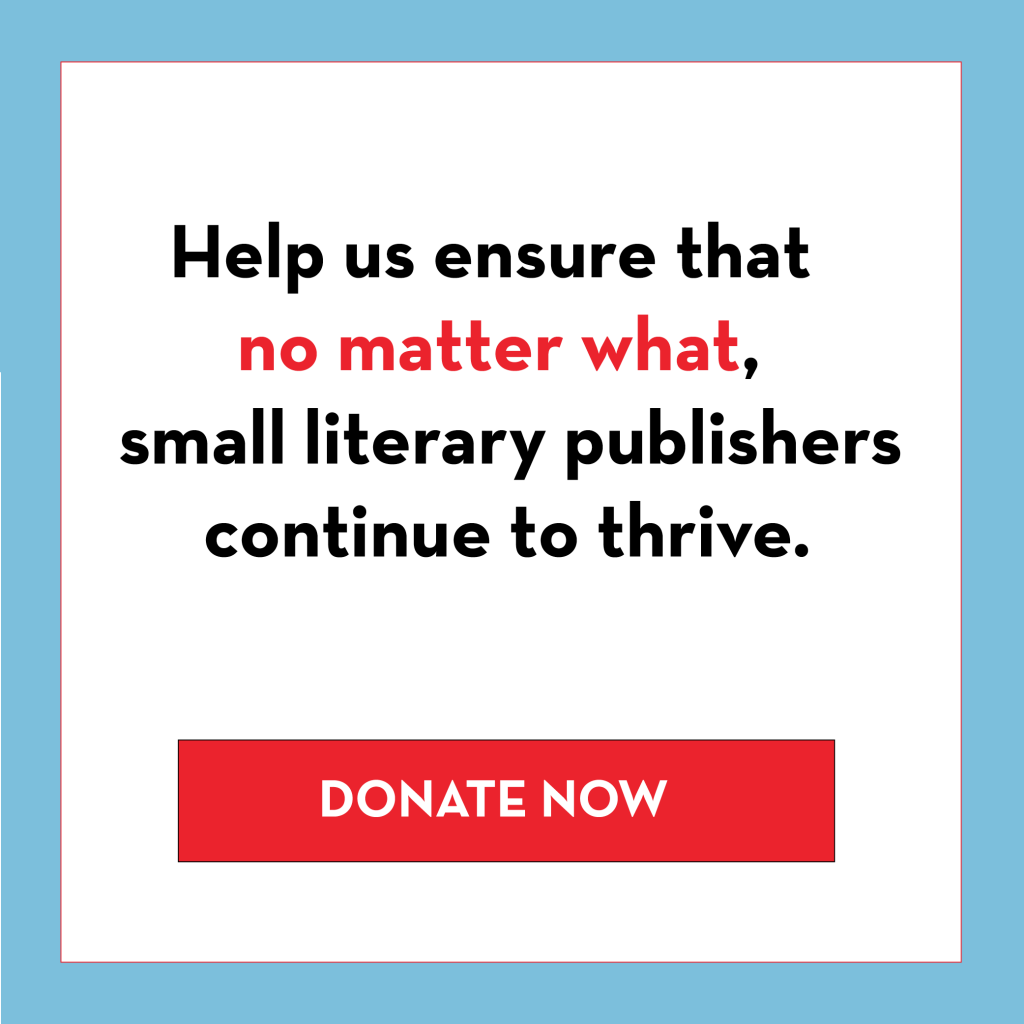We spoke with Karen Phillips, the executive director of Words Without Borders, in this installment of the CLMP Member Spotlight series.
What is the history behind Words Without Borders? When was it founded and what is its mission?
 Words Without Borders cultivates cultural awareness by expanding access to—and engagement with—contemporary international writing in English translation. We were launched in 2003 by three globally minded editors—Alane Salierno Mason, Dedi Felman, and Samantha Schnee—seeking to counter some of the cultural isolationism that followed 9/11 and the publishing sector’s lagging interest in translation. Since then, WWB has sought out new writing from around the globe and made it accessible to readers of English through a free monthly digital magazine.
Words Without Borders cultivates cultural awareness by expanding access to—and engagement with—contemporary international writing in English translation. We were launched in 2003 by three globally minded editors—Alane Salierno Mason, Dedi Felman, and Samantha Schnee—seeking to counter some of the cultural isolationism that followed 9/11 and the publishing sector’s lagging interest in translation. Since then, WWB has sought out new writing from around the globe and made it accessible to readers of English through a free monthly digital magazine.
Today, Words Without Borders is the largest free digital repository of contemporary literature in translation. With work by more than 2,600 contemporary authors from 139 countries translated into English from 125 languages—Arabic to Luganda, Welsh to Guaraní—WWB’s free digital magazine has offered insights, inspiration, and a humanistic lens on the world to millions of readers. We serve as an essential platform for literatures overlooked by mainstream publishing and often provide the first English-language exposure for writers working in other languages.
What are some of the rewards of publishing translated work?
The biggest, and perhaps most obvious, reward of publishing translation is opening access to a terrific breadth of literary voices and perspectives from around the world. With every issue, I marvel because it feels we’ve barely scratched the surface. Our planet is home to some 7,000 living languages, and we’ve published writing from just 125 of them. I frequently get emails from readers asking if I can tell them where they can buy a contributor’s book in English, but too often, the book has not been translated. So to be able to provide a space in which Anglophone readers can experience at least a story, or poem, or excerpt from these incredible writers feels really important right now.
I’d also say, without overstating the power of literature to foster empathy and make us better humans, that reading outside of our own cultural, geographic, and linguistic context helps us navigate a complex and interconnected world. There is learning and awareness that happens when we’re immersed in a story or poem, and this experience can spark new connections and questions. Reading work in translation also just brings us into a broader literary conversation and makes us less provincial. It’s not just all about New York City and London! There are other centers, other literary scenes, and other conversations.
 Getting to introduce incredible writers to Anglophone readers and then watching these writers make new connections in their careers is the absolute best. In June, Turkish writer Nazlı Karabıyıkoğlu debuted in our annual Queer issue, and after an agent heard her read at our virtual launch, she signed her. It feels great when some initial exposure in Words Without Borders helps a writer or translator find a bigger platform in English, whether it’s an award, a book deal, or just publication in another literary magazine. (And this is, of course, why we need more literary magazines publishing works in translation!)
Getting to introduce incredible writers to Anglophone readers and then watching these writers make new connections in their careers is the absolute best. In June, Turkish writer Nazlı Karabıyıkoğlu debuted in our annual Queer issue, and after an agent heard her read at our virtual launch, she signed her. It feels great when some initial exposure in Words Without Borders helps a writer or translator find a bigger platform in English, whether it’s an award, a book deal, or just publication in another literary magazine. (And this is, of course, why we need more literary magazines publishing works in translation!)
Finally, on a personal level, being connected with an amazing global network of writers and translators and readers is highly rewarding. It’s such a warm, open, and supportive community of folks driven by a desire to engage with and promote writing they are passionate about.
Your July/August 2020 issue on contemporary Guaraní poetry is the first installment of the Indigenous Writing Project. Can you tell us a little about this project? What are your goals? What inspired this series?
Yes! This ongoing series was inspired by so much stunning work written in indigenous languages that is rarely translated directly into English. The Indigenous Writing Project is our attempt to increase recognition of indigenous writers in the Anglophone world. We’re trying to present this writing on its own rather than through a Western/colonial lens.
We decided to begin the project in the Americas, and our first installment features four poets writing in several Guaraní dialects: Mbyá Guaraní, Jopara, and Portunhol Selvagem, a hybrid of Spanish, Portuguese, and Jopara. As we embarked on this project, we needed to undertake a fair amount of learning and enlisted the help of Elisa Taber as a guest editor and of Susy Delgado, the leading expert on Guaraní literature. Including audio of the original poems was important so that the reader could listen to the rhythms and melodies of the Guaraní. One of the poems, Alberto Luna’s “Serpent,” was one of my personal favorites this past year. And Taber’s introduction offers us some context for approaching Amerindian writing more broadly, and Guaraní specifically. We’re already at work on the next installment, an issue of Mapuche writing, which will launch in fall 2021.
What is WWB Campus? Why is it important for students to encounter “eye-opening contemporary literature from across the globe”?

Centering global voices that are often at the margin of the U.S. geopolitical and cultural discourse has never been more important, especially within our education system. WWB Campus (wwb-campus.org) is a digital resource designed to introduce high school and college students to contemporary international literature. The program features writing by 100+ writers from seven countries (and counting!), alongside hundreds of curricular resources, and is used by thousands of U.S. educators and students. In 2019, responding to a demand from educators across the U.S., we started offering free in-person and virtual workshops for teachers on how to incorporate international literature into their curricula.
The texts and curricular materials on WWB Campus spark classroom discussions about race, migration, social justice, gender, and cultural difference, while also offering a rich space for discovery. We know that more than 90% of students express an increased interest in reading international literature after using WWB Campus, and that educators report heightened student engagement when reading these texts. We also know that WWB Campus is the first time many students have seen their own cultural heritage reflected in the curriculum. I should mention that WWB Campus and our workshops are totally free resources.
What are your hopes for this “virtual learning space without borders,” and the teachers and students who use it, during this time of remote learning?
We saw a heartening surge in users last spring as most schools moved online, and we expect to see more educators and students accessing the site this fall. It is fundamental that students, especially in the United States, stay in touch with the rest of the world and see themselves as integrally connected to it, particularly at a time when this country is putting migrant children in cages, building border walls, and dramatically limiting visas. The message at WWB Campus is that international writing tells us about the world we live in; it’s exciting to engage with that world, but this engagement also requires our humility and respect.
How has Words Without Borders changed since 2003? Can you share some of your goals for the next few years?
We’ve grown a lot since 2003. Back then, we were an inspired but scrappy start-up and one of the first literary magazines to be conceived as an online-only publication. Today we’re a well-established literary organization with a much wider reach, a five-person staff, an education program, an event series, a fellowship program, and contests. Our stability allows us to take more risks editorially and undertake projects that require time and resources, like featuring languages that are not often translated or engaging in partnerships like our Poems in Translation contest with the Academy of American Poets’s Poem-a-Day. We’ve got an incredibly engaged board and a devoted staff, who have made this growth possible.
Despite the disastrous state of the world, or perhaps because of it, we see a growing role for WWB and for translated literature more broadly. Last year, we completed a strategic plan that placed our focus on engaging new audiences for international literature while expanding the space for literatures too often overlooked by the Anglophone publishers. A cornerstone of this plan involves a redesign of our website focused on visibility, access, and ease of navigation for our various audiences, including educators and student readers. The new site will allow us to move away from a monthly publication model in favor of more editorial flexibility, multimedia content, and writing that responds to global events. It will better showcase the rich content of our archive and offer more ways to feature the work of independent publishers of translation and other partners in the field. We’re excited!
